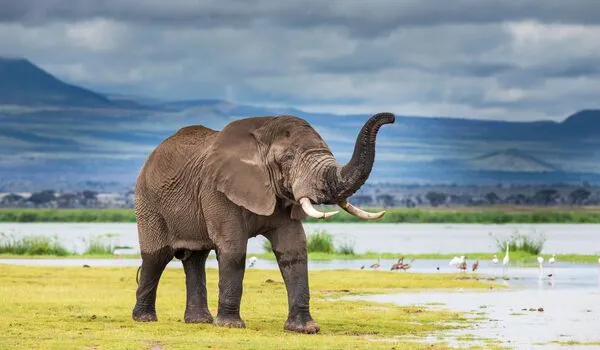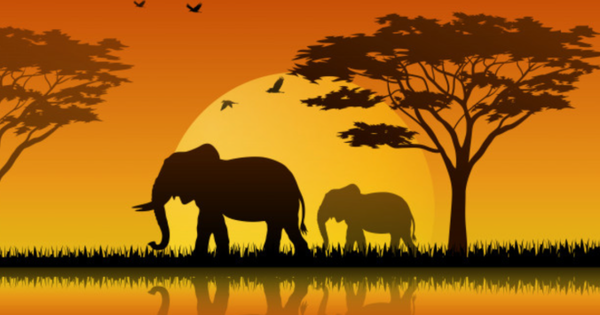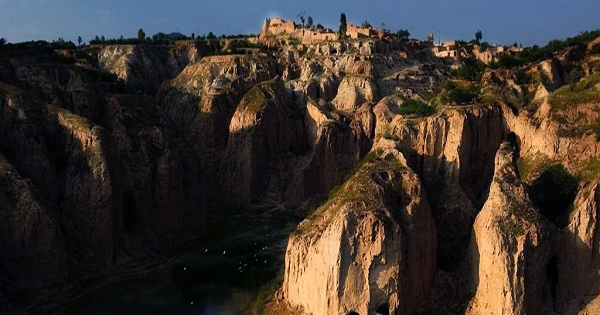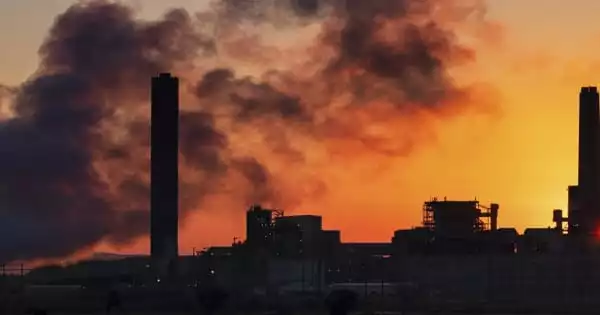Elephants are considered keystone species, meaning that they have a profound impact on their ecosystem and other species that live there. For example, they play a critical role in seed dispersal, helping to regenerate forests and support plant diversity. Elephants also shape their habitats through their feeding habits, creating important habitats for other animals.
In addition to their role in maintaining healthy ecosystems, elephants are also an important part of many cultures and economies, particularly in Africa where they are a major tourist attraction. This economic value can provide incentives for the conservation of elephant habitats and can help to reduce the pressure on elephants from human activities such as poaching and deforestation.
Elephants, according to researchers, play an important role in creating forests that store more atmospheric carbon and in preserving Africa’s forest biodiversity. If elephants, which are already critically endangered, become extinct, the rainforests of Central and West Africa, the world’s second-largest rainforest, would lose between six and nine percent of their ability to capture atmospheric carbon, exacerbating planetary warming.
Saint Louis University researchers and colleagues report in the Proceedings of the National Academy of Sciences (PNAS) that elephants play an important role in creating forests that store more atmospheric carbon and maintaining the biodiversity of African forests. If the already critically endangered elephants become extinct, rainforest of central and west Africa, the second largest rainforest on earth, would lose between six and nine percent of their ability to capture atmospheric carbon, amplifying planetary warming.
Assistant professor of biology at Saint Louis University and senior author on the paper Stephen Blake, Ph.D., has spent much of his career dedicated to studying elephants. In the current paper, Blake, lead author Fabio Berzaghi from the Laboratory of Climate and Environmental Sciences (LSCE), France, and colleagues document exactly how the ecology of megaherbivores has such a strong influence on carbon retention in African rainforests.
Elephants eat a lot of leaves from a lot of trees, and they eat a lot of damage. When eating, they will strip leaves from trees, rip off a whole branch, or uproot a sapling, and our data shows that low carbon density trees suffer the most damage.
Stephen Blake
“Humans have hunted elephants for millennia,” Blake explained. “African forest elephants are thus critically endangered. The argument that everyone loves elephants has not garnered enough support to put a stop to the killing. Shifting the elephant conservation argument to the role forest elephants play in maintaining forest biodiversity, that losing elephants would mean losing forest biodiversity, hasn’t worked either, as numbers continue to fall. We can now confidently conclude that if forest elephants are lost, we will be doing a global disservice to climate change mitigation. Policymakers must recognize the importance of forest elephants in climate mitigation in order to generate the necessary support for elephant conservation. The role of forest elephants in our global environment is too important to ignore.”
Some trees in the forest produce light wood (low carbon density trees), while others produce heavy wood (high carbon density trees). Trees with low carbon density grow quickly, rising above other plants and trees to reach the sunlight. Meanwhile, trees with a high carbon density grow slowly, require less sunlight, and can grow in shade.
Elephants and other megaherbivores influence tree abundance by feeding more heavily on low-carbon-density trees, which are more palatable and nutritious than high-carbon-density species. This “thins” the forest, similar to what a forester would do to encourage the growth of their preferred species. This thinning reduces competition among trees and increases light, space, and soil nutrients, allowing high-carbon trees to thrive.

“Elephants eat a lot of leaves from a lot of trees, and they eat a lot of damage,” Blake explained. “When eating, they will strip leaves from trees, rip off a whole branch, or uproot a sapling, and our data shows that low carbon density trees suffer the most damage. If there are a lot of high carbon density trees nearby, that’s one less competitor for the elephants to eat.”
Elephants are also excellent dispersers of high-carbon-density tree seeds. Elephants eat the large nutritious fruits that these trees produce. Those seeds pass through the elephants’ guts unharmed, and when released through dung, they germinate and grow into some of the forest’s largest trees.
“Elephants are the forest’s gardeners,” Blake explained. “They plant high carbon density trees in the forest and remove the ‘weeds,’ which are low carbon density trees. They put in a lot of effort to preserve the forest’s diversity.”
Elephants are directly linked to influencing carbon levels in the atmosphere as a result of these preferences. High-carbon-density trees store more carbon from the atmosphere in their wood than low-carbon-density trees, assisting in the fight against global warming.
“Elephants have multiple societal benefits,” Blake said. “Kids all over the world play with stuffed elephants in bedrooms. African forest elephants also promote rainforest diversity in a multitude of ways.”
With this knowledge, Berzaghi is now looking ahead to the future to determine how other animals in the rainforests affect its biodiversity and if they have the same impact as elephants.
“The implications of our study go beyond just African forest elephants,” Berzaghi said. “Because we show that leaves from low carbon density trees are less appealing to herbivores, our findings suggest that other large herbivores, such as primates or the Asian elephant, may contribute to the growth of high carbon density trees in other tropical forests. Our goal is to expand on this by looking into other species and regions.”
Armed with this vital information, the arguments to conserve the forest elephants of the Congo Basin and West Africa have never been greater. Populations of elephants have been eliminated from many areas of the forest, and in many areas, they are functionally extinct, meaning that their populations are so low that they have no significant impact on the ecology of the forest. Blake calls for more protection for forest elephants.
“The illegal killing and trade of elephants continues,” Blake stated. “Ten million elephants once roamed Africa; now, there are fewer than 500,000, with the majority of populations living in isolated pockets. These elephants are classified as endangered to critically endangered, with their numbers dropping by more than 80% in the last 30 years.
Despite the fact that elephants are protected under national and international law, poaching continues. These illegal killings must stop if forest elephants are to be saved. We now have a choice. We can continue to hunt these highly social and intelligent animals and watch them become extinct as a global society, or we can find ways to stop this illegal activity. It’s that simple: save the elephants and help save the planet.”
















